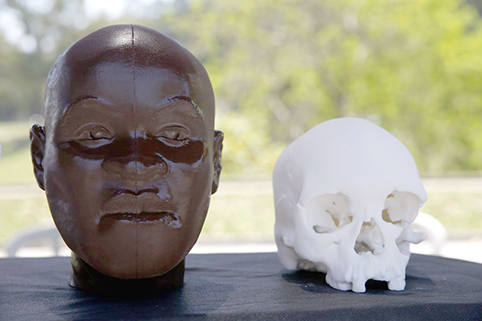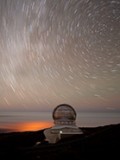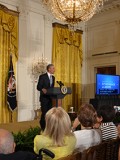
Replicas of the face and skull of Luzia, the earliest Brazilian fossil found in Lagoa Santa, printed in 3D. Credit: Fernando Frazão/Agência Brasil
Who were the first Americans? Were they from North or South America? Did the first ones inhabit North America and travel between a land bridge to South America or was it reversed?
New Study Seeks Answers
An unprecedented study, with the participation of researchers from the National Museum of Rio de Janeiro, found a direct relationship between the populations of North America and South America. The research, whose first results were published in November in the US magazine Science, shows that migrations to occupy the continent occurred quicker than what was imagined. The work is based on the genetic study of fossils found in Brazil, in populations of Lagoa Santa, in Minas Gerais, and of the Spirit Cave mummy, the oldest natural mummy in the world, found in Nevada, United States.
The research, led by the Danish Eske Willerslev of the University of Copenhagen, aims to identify how was South America populated and its relationship with North America, Siberia and Australia. Brazilians Murilo Bastos, Cláudia Carvalho and Silvia Reis, from the National Museum; and Luiz Souza, Fabrício Santos and Thomaz Pinotti, of the Federal University of Minas Gerais, are part of the team that analyzed the genetic traits of the oldest fossils in the Americas.
How Were the Early Populations Formed?
The study also hints as to the enigmatic Australo-melanesian (Australia and Melanesia) genetic signal found in the population of Lagoa Santa, which dates back at least 10,000 years and is not found in prehistoric populations of North America. Researchers wish to know how these populations were formed, how many migration waves have occurred and to what extent they have influenced the formation of the peoples who currently inhabit these areas.
Excavations at Lagoa Santa, where the skull of Luzia, the earliest Brazilian fossil, was found, began in the end of the 19th century. According to Danish museum researcher Peter de Barros Damgaard, who works with Willerslev, the material remained untouched for a long time until the researchers made its first successful analysis, dating and sequencing the skeletons. Now, samples which were rescued by the National Museum of Rio de Janeiro months before the fire of September of this year are being put together with the studies. “We already have positive results, not only dating samples, but also sequencing entire genomes,” Damgaard told Agência Brasil.
Researchers are looking at how they can perform a genetic analysis of the Luzia fossil, which they think may explain the relationship of the population of Lagoa Santa with the native peoples of South America and Australia. “We want to know how this genetic signal was inserted, linking the peoples from South America with those from Australia, compared to the Indians of North America,” says Damgaard, who believes Luzia is the key to explaining this mystery.











